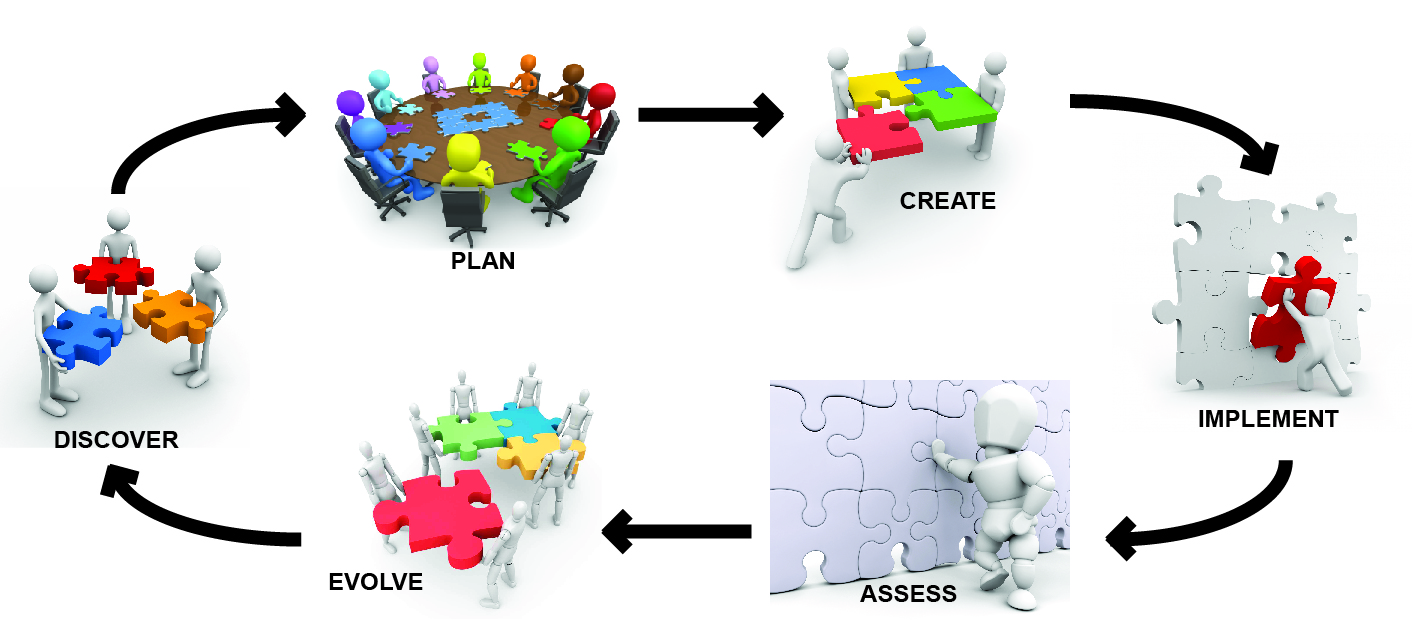
The design process is often circular, looping back on itself as the team learns more about a project, ultimately informing the beginning of the process for the next project. The design process is rarely linear due to the ongoing analysis and synthesis and testing of ideas throughout the process and we have observed that phases will often overlap. At Richaven, we see the process in approximately 6 phases, as is suggested by the diagram above. The six phases are:
Discover (analyze and hypothesize): Learning and discovering unknown things about the anticipated project.
Plan (test): Trying out certain ideas or proposals that may lead you to better understand a project or lead you to more analysis and discovery about the project.
Create, Iterate (understand): Creation and iteration of the concepts proposed demonstrate your understanding of the project – and point out the areas where we don’t understand it as well.
Implement (deliver): Bringing together and documenting all of the ideas that are the results of the iterative process and delivering a finished product to the client.
Measure (assess): Combining analysis of the delivered project with testing of the results in a better understanding of the success of a project
Evolve (attain a higher state): Learning from the assessment of the results of a project and improving all of the steps of the design process.
